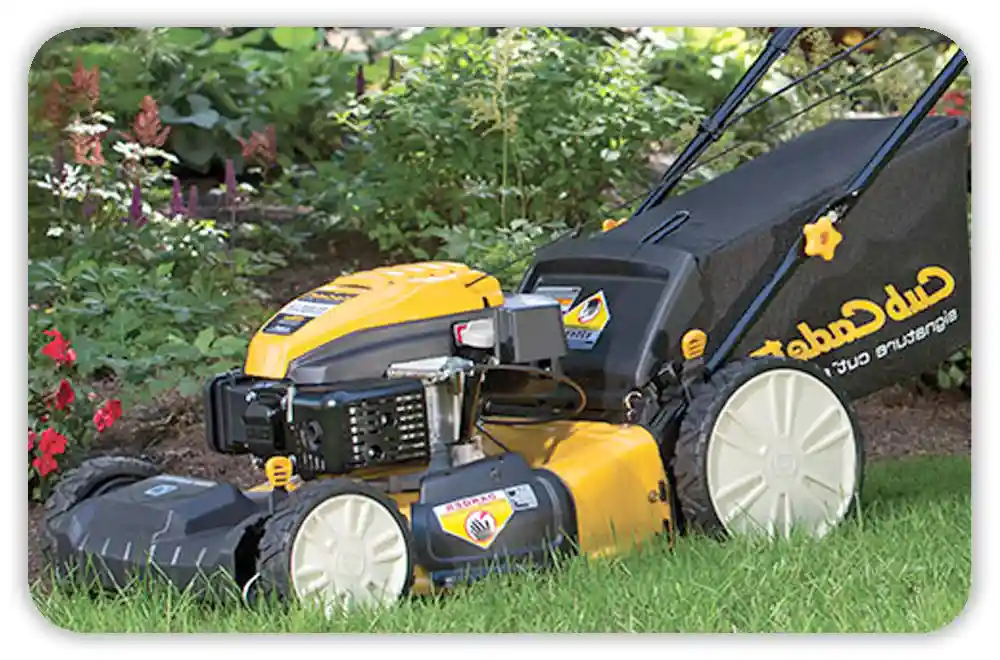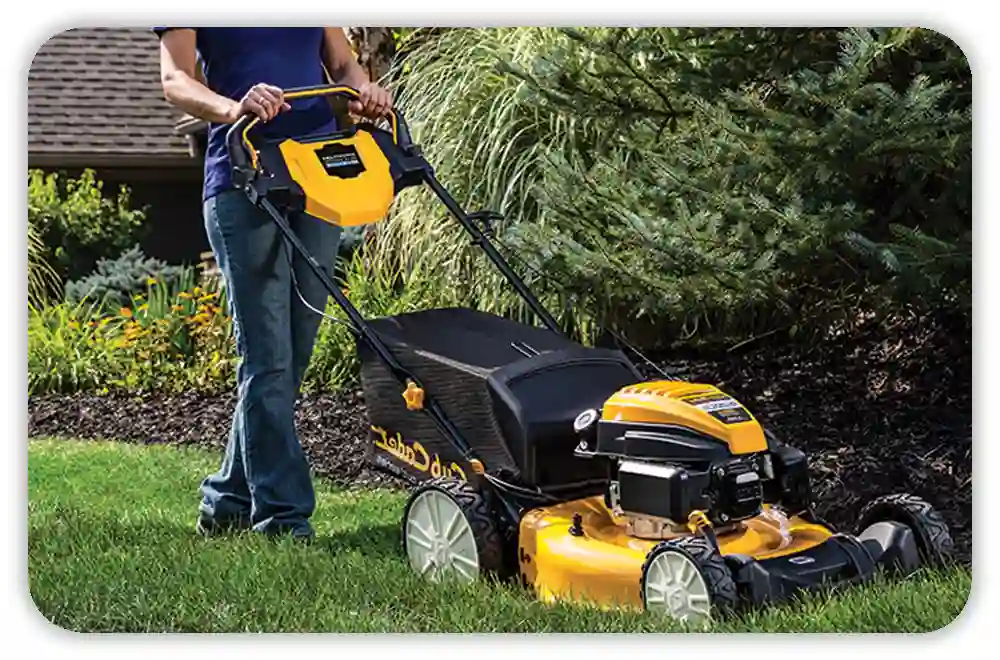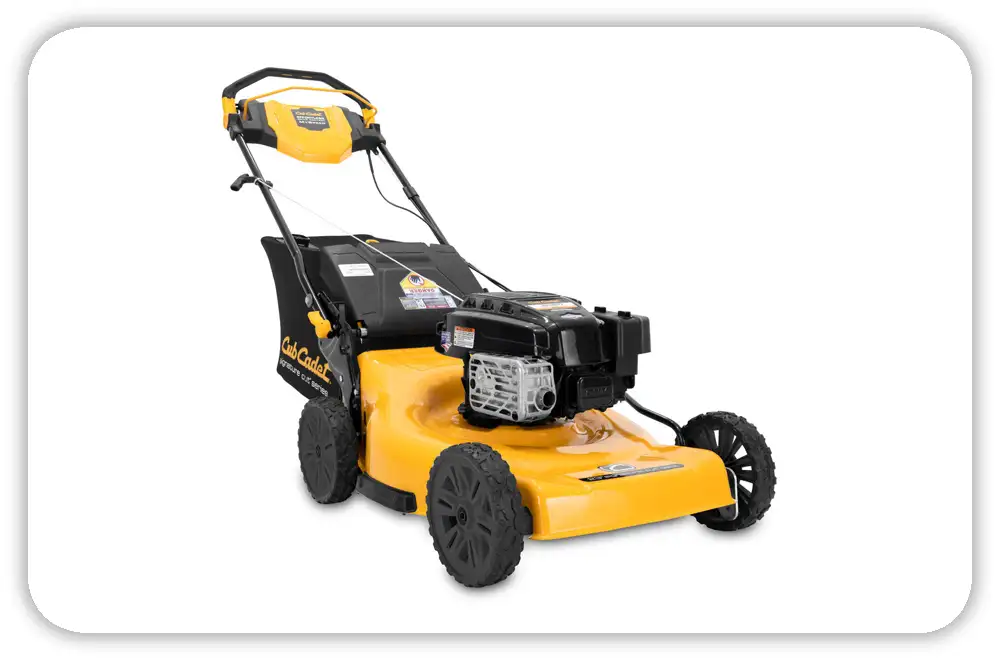Not sure what oil to use in your Cub Cadet mower? It depends on the engine and your local weather. For most models, SAE 10W-30 works best—especially in mild U.S. climates. I’ve used this oil for years in my own mower. It keeps the engine running smooth in both hot summers and cool spring mornings.
I’ve tried other types too. Some worked okay. Others just didn’t live up to the hype. Over time, I’ve learned what really works. In this guide, I’ll break it down for you—step by step and easy to follow.
Table of Contents
Why Choosing the Right Oil Matters
A few years back, I used the wrong oil in my Cub Cadet. It was too heavy for the cool spring weather. The engine started slow, ran louder, and even let out a bit of smoke. I drained it, switched to SAE 10W-30, and wow—what a difference. The mower ran quiet, smooth, and didn’t overheat.
Oil does more than “keep things running.” It cools your engine by cutting down on friction. It also keeps the moving parts slick and helps clear out tiny bits of dirt. But if the oil is too thick or too thin for the weather or engine, it won’t do any of that well. And your mower takes the hit.
Where you live matters too. Texas heat? You’ll want oil that won’t break down in high temps. Cutting grass in chilly fall mornings up north? Use oil made for cold starts. And don’t forget—your engine brand (like Kohler or Kawasaki) also matters. Each one has its own oil needs, so don’t treat them all the same.
Understanding Your Cub Cadet Engine

Know Your Engine Brand (Kohler, Kawasaki, Briggs & Stratton, Powermore)
Before you buy oil, find out what engine is in your mower. Most Cub Cadets use Kohler, Kawasaki, Briggs & Stratton, or Powermore engines.
To check, look for a label or sticker on the engine—usually near the air filter or starter. On some riding mowers, it might be under the seat or on the frame.
Why Engine Type Affects Oil Choice
Each engine works a bit differently. Some need thick oil, others run better with thin. For example, Kawasaki engines often call for full synthetic oil. Briggs & Stratton usually prefers conventional or a synthetic blend. Kohler gives you some wiggle room but still has rules for each season.
I used to think oil was just oil. But one hot summer, I used the wrong type in a Powermore engine. It gummed up the carb and ran rough for weeks. Since then, I always follow the maker’s oil guide. It helps your mower last—and it keeps your warranty safe too.
So, when someone says “just use 10W-30,” be careful. That might work for some mowers, but not all. It’s smarter to match your oil to your engine, your climate, and how often you mow.
Recommended Oil Types for Cub Cadet Lawn Mowers
Picking the right oil isn’t about grabbing the first bottle off the shelf. It depends on your engine type, the weather, and how often you mow. I’ve tested a bunch of oils—some worked great, others didn’t. Here’s what actually holds up.
Oil Chart by Engine Type & Temperature Range
Use this quick chart to match your mower’s engine and the weather in your area. It’s saved me more than once before mowing season.
| Engine Brand | Above 40°F | Below 40°F | All-Season Option |
| Kohler | SAE 30 | 10W-30 or 5W-30 | 10W-30 |
| Kawasaki | 10W-30 or 20W-50 | 5W-30 (synthetic) | 10W-30 (full synthetic) |
| Briggs & Stratton | SAE 30 | 5W-30 | 5W-30 (synthetic blend) |
| Powermore | 10W-30 | 5W-30 | 10W-30 |
Tip: If you live in hot places like Texas or Arizona, go with thicker oil like 20W-50 (if your engine allows). If you’re up north where it gets cold, 5W-30 makes for easy starts.
Conventional vs. Synthetic Oil
Which one is better—conventional or synthetic? Here’s what I’ve learned:
In my hot southern summers, synthetic works better. It doesn’t thin out when the engine gets hot. My mower runs cooler, and I’ve had fewer problems with wear or build-up.
If you mow once a week at home, a synthetic blend or good conventional oil is fine. But if you mow a lot—or run a landscaping business—full synthetic is worth the upgrade. It lasts longer and gives better protection.
My take? I switched to synthetic after a summer heatwave almost cooked one of my engines. I’ve stuck with it ever since—and haven’t had any trouble.
Best Oils for Each Engine Brand
- Kohler: I like Kohler 10W-30 all-season oil. It works well in most temps and keeps the engine smooth. For me, it’s the best all-around pick.
- Kawasaki: These engines run hot, so I go with full synthetic 10W-30 or even 20W-50. Synthetic holds up better under stress, and Kawasaki recommends it for good reason.
- Briggs & Stratton: If you’re watching your budget, their SAE 30 conventional oil works okay. But I prefer the 5W-30 synthetic—it’s a small step up, and it helps the engine last longer.
- Powermore (Cub Cadet engines): This is what’s in my own mower. I’ve used 10W-30 conventional for years here in the Midwest. It’s been great. But if you live where it gets colder, try 5W-30—it starts easier when it’s chilly.
How Temperature Affects Your Oil Choice

When it comes to mower oil, the weather really matters.
Here’s why: Oil thickens when it’s cold and thins out when it’s hot. If your oil is too thick on a chilly morning, your engine may struggle to start. If it’s too thin in summer, it won’t protect your engine parts well. That’s why oil labels have numbers like SAE 30, 10W-30, or 5W-30.
Breaking Down SAE Grades (In Simple Terms)
- SAE 30: Best for warm weather. It’s a single-grade oil, so it works great when hot—but not in cold.
- 10W-30: A multi-grade oil. The “10W” helps it flow in cold weather. The “30” protects well in heat.
- 5W-30: Flows even better in cold. Great for spring or fall mornings when it’s brisk outside.
What Works Best by U.S. Region
Here’s what I’ve found works best depending on where you live:
- Northeast, Midwest, Pacific Northwest: Use 5W-30 or 10W-30 for smooth cold starts in spring and fall.
- South and Southwest: Go with SAE 30 or 10W-30. For heavy use, consider 20W-50 synthetic.
- Mountain states: I stick to 10W-30 synthetic. It works in cool mornings and hot afternoons.
How to Check and Change Oil in a Cub Cadet Mower
Changing your oil is easier than you think. I’ve been doing it for years, and after the first time or two, it becomes second nature.
Step-by-Step Guide (My Routine)
What You’ll Need:
- Oil pan or container
- Funnel
- Wrench or pliers
- Clean rags or paper towels
- New oil (check your manual)
- New oil filter (if needed)
Steps:
- Run the engine for 2–3 minutes. Warm oil drains better.
- Turn off the engine and pull the key.
- Find the drain plug (usually under the mower).
- Put the oil pan underneath. Open the plug and let it drain fully.
- Replace the oil filter (if your model has one).
- Tighten the plug back in.
- Pour in fresh oil using a funnel. Don’t overfill—check the dipstick.
- Wipe up drips, start the engine, let it run for 30 seconds, then check oil again.
That’s it! It usually takes me 15–20 minutes.
Tools I Personally Recommend
- Hopkins FloTool Drain Container – Keeps the mess to a minimum.
- FRAM Tough Guard Oil Filters – Works great with synthetic oil.
- Motor oil funnel with screen – Catches any tiny debris before it enters the engine.
When to Change Oil
It’s easy to forget, but this simple task keeps your mower running strong.
New Mowers: Change oil after the first 5–10 hours. This clears out tiny metal bits from break-in.
After That: Change it every 50 hours or once per season, whichever comes first. If you mow in dust or tall grass often, change it more often.
How I Never Miss an Oil Change
I write the date and hours on a piece of blue painter’s tape and stick it near the seat. Super low-tech—but I haven’t missed a change since I started doing it!
Common Mistakes to Avoid
I’ve made some of these mistakes myself—so if you have too, don’t worry. Here are the most common oil slip-ups I’ve seen with Cub Cadet mowers (and what I learned the hard way).

Using Car Oil in a Mower
Car oil might look the same, but mower engines are different. Car oil has additives that don’t always work well in small engines—especially ones without oil filters.
Once, I used leftover 5W-30 from my truck in a push mower. It seemed fine at first. But it foamed up, ran hot, and didn’t protect the engine. Lesson learned: use oil made for small engines only.
Ignoring Temperature Ratings
The right oil in summer can be the wrong oil in spring. I once used SAE 30 on a chilly April morning. My mower sputtered and stalled—like it had a cold.
Always match the oil to the season. If you’re not sure, check the chart in section 4.1.
Skipping the Oil Filter Change
If your mower has an oil filter, don’t skip it. Clean oil running through a dirty filter is like drinking clean water through a dirty sponge. It clogs up fast and wears your engine out.
I change the oil filter every time I change the oil. It only takes an extra minute—and keeps things running better.
Forgetting the Break-in Oil Change
Got a new mower? Change the oil after the first 5 to 10 hours.
During break-in, tiny metal bits and grime build up fast. I once skipped this step—and the engine sounded rough way too soon. Now I always do that first change early. It gives the engine a fresh, clean start.
Top Oil Brands I Recommend
Over the years, I’ve tried many motor oils in my Cub Cadet mowers. Some worked well. Others didn’t. These are the ones I keep using—they’ve done a great job time and time again.
Good news: You can find all of these at Home Depot, Walmart, or Tractor Supply Co. You can also order them on Amazon if you like delivery.
Kohler 10W-30 Engine Oil
Best for: Kohler engines (great for riding mowers)
Why I like it: It’s made for small engines. I’ve used it on hot summer days and cool spring mornings. My mower always starts up strong.
Where to buy: Home Depot, Amazon
Downside: Costs a bit more than basic oils
Briggs & Stratton SAE 30 or 5W-30 Synthetic Blend
Best for: Push mowers and simple lawn care
Why I like it: Easy to find at most stores. The synthetic blend handles warm and cool temps well.
Where to buy: Walmart, Tractor Supply Co, Amazon
Downside: Not great for big or heavy-duty mowing jobs
Mobil 1 10W-30 Full Synthetic
Best for: Kawasaki engines and hot weather mowing
Why I like it: It keeps the engine cool, even on hot days. I’ve mowed for hours without foam or oil breakdown.
Where to buy: Amazon, AutoZone, Walmart
Downside: It’s pricey—but worth it for big yards or hot climates
Castrol GTX 5W-30
Best for: Cold starts and early spring mowing
Why I like it: It’s thin, so your engine starts easier on cold mornings. Still protects when it gets hot.
Where to buy: Amazon, Walmart
Downside: It’s not made just for small engines. Works best in mowers with oil filters.
STP Small Engine Oil
Best for: Quick oil changes and budget-friendly care
Why I like it: Cheap, simple, and made for lawn gear. Good to keep on hand.
Where to buy: Tractor Supply Co, AutoZone
Downside: Not the best choice for synthetic-only engines or long mowing jobs
Conclusion
By now, you’ve seen that oil isn’t just oil. Picking the right kind for your Cub Cadet matters—a lot.
Here’s the quick take:
- Use oil that matches your engine and weather.
- Check your mower’s manual—or the chart in section 4.1.
- Don’t use car oil. It’s not made for small engines.
- Change your oil often. And don’t skip the filter.
Live in a hot place like Texas or Florida? Go with a synthetic oil. It handles heat better. Live up north? Try a 5W-30. It flows well in cold weather.
No matter where you are, follow what your engine maker says.
I’ve learned this the hard way. Using the right oil saved me from big problems—and even saved one engine. Now, I stick with what works. My mower runs smooth, year after year.
I hope this guide made oil choices easier for you. Got tips, questions, or a mower you want to talk about? Drop a comment below. I’d love to hear from you.
Want more lawn care tips? Check out the Lawn category page.
Happy mowing!
FAQs – What Type of Oil for a Cub Cadet Lawn Mower
What type of oil should I use in my Cub Cadet lawn mower?
Most Cub Cadet mowers work best with SAE 10W-30 oil. It handles hot and cold weather well and works with many engine types like Kohler or Powermore.
Can I use car engine oil in my Cub Cadet mower?
No, avoid car oil. It often has additives that small mower engines can’t handle—especially if there’s no oil filter installed.
Does temperature matter when choosing oil for my Cub Cadet?
Yes. Use 5W-30 in cold climates and 10W-30 or 20W-50 for hot areas. Always match the oil grade to your local weather.
How often should I change oil in a Cub Cadet mower?
Change it after the first 5–10 hours on new mowers, then every 50 hours or once per season—whichever comes first.
Can I use synthetic oil in my Cub Cadet lawn mower?
Yes, synthetic oil works great—especially in extreme heat or with Kawasaki engines. It helps reduce wear and lasts longer.

